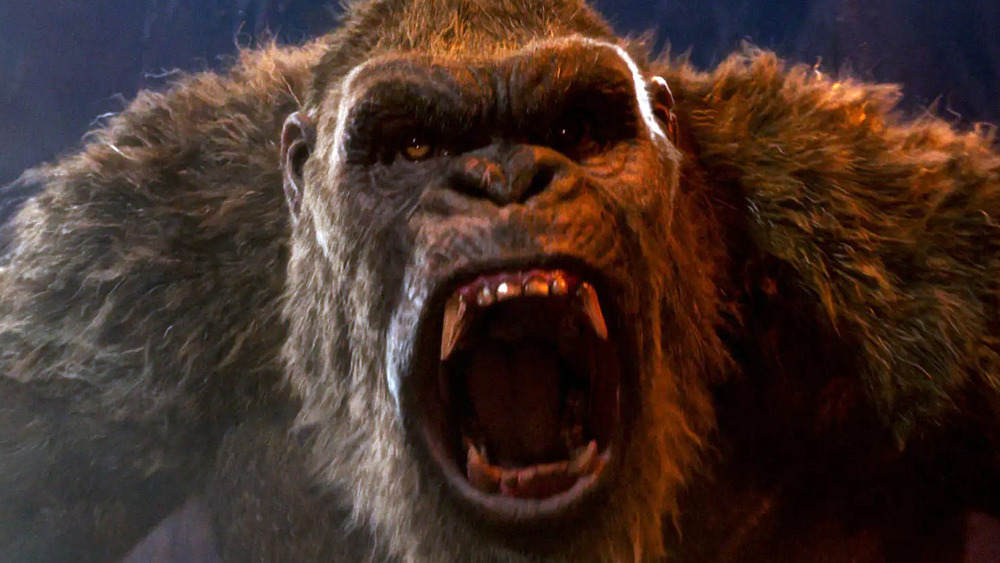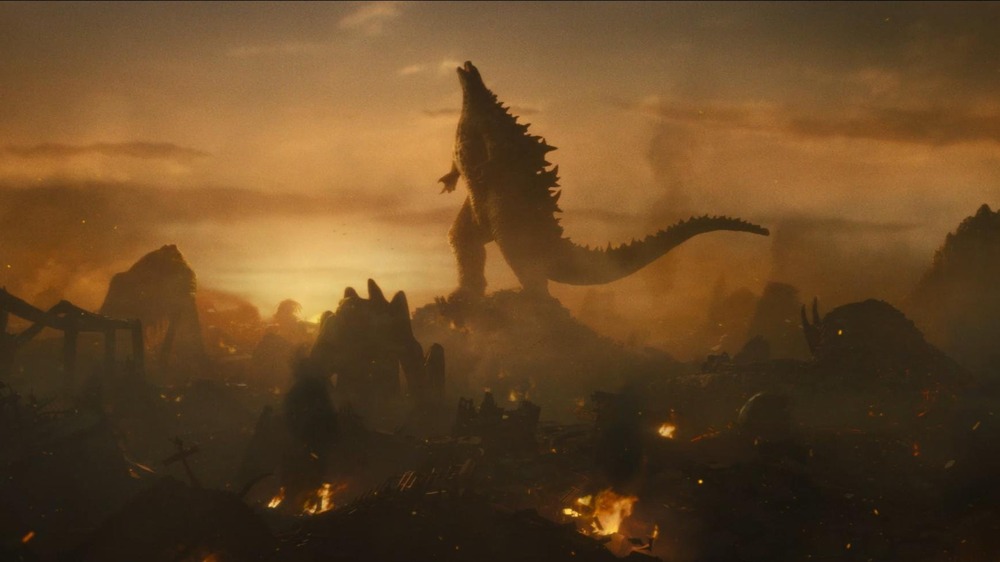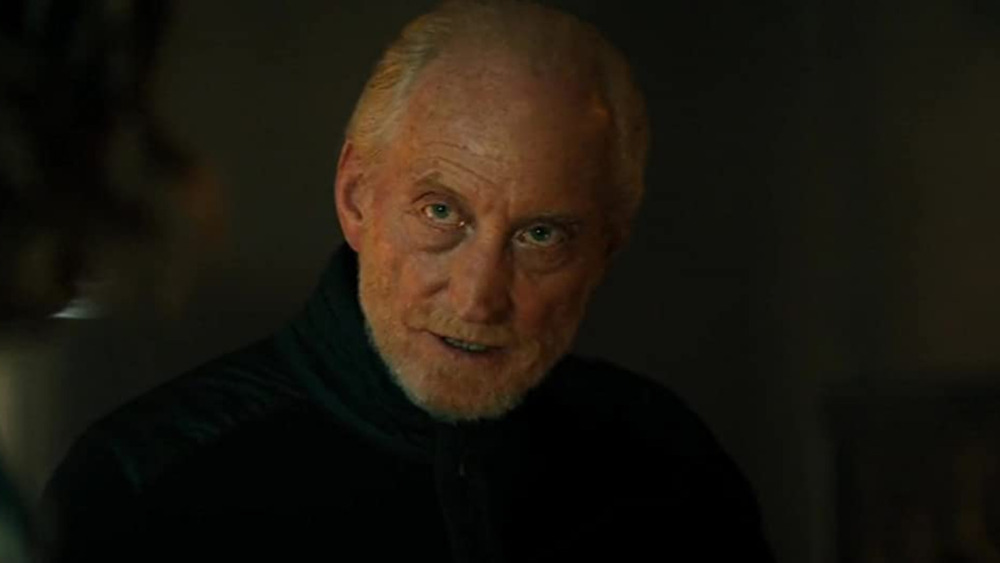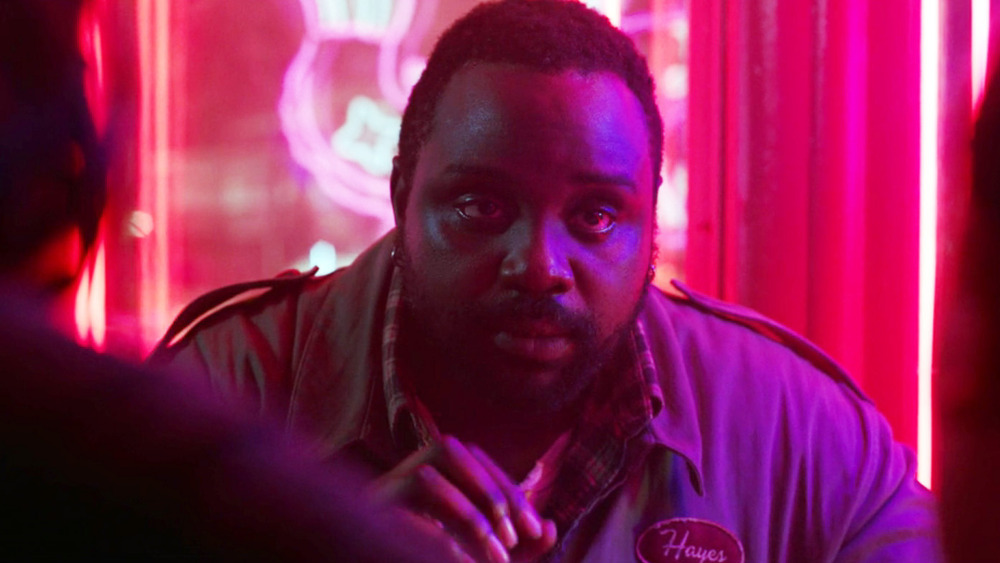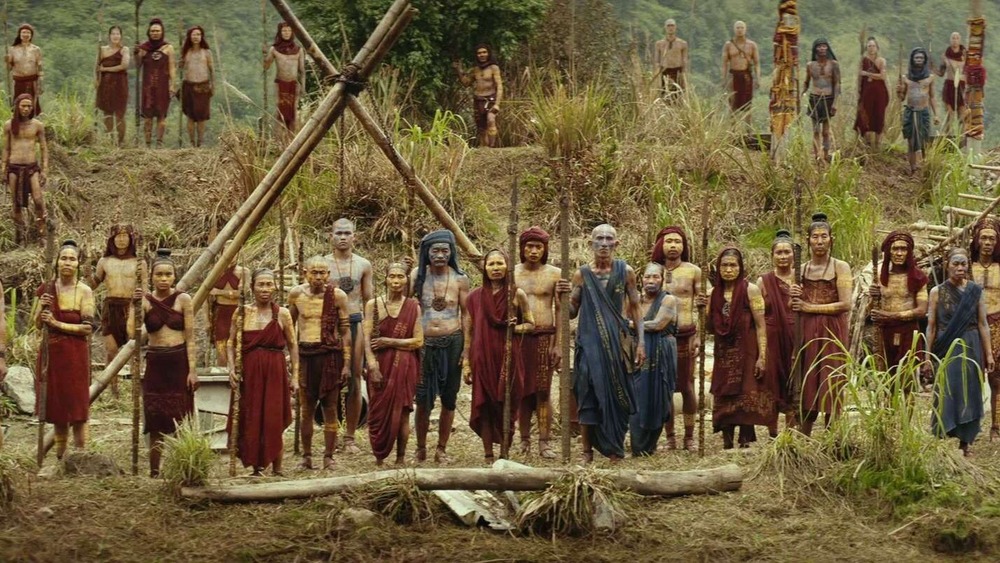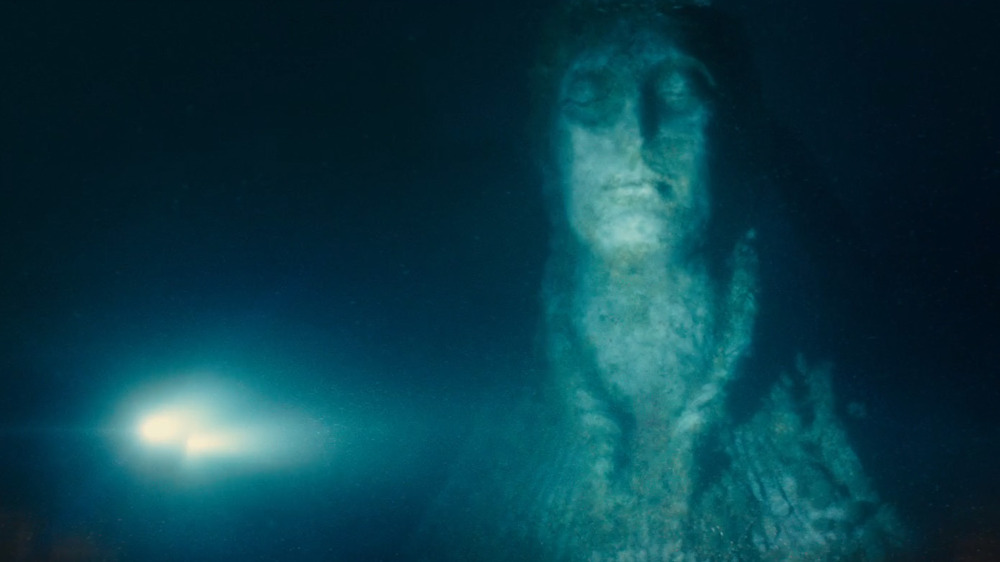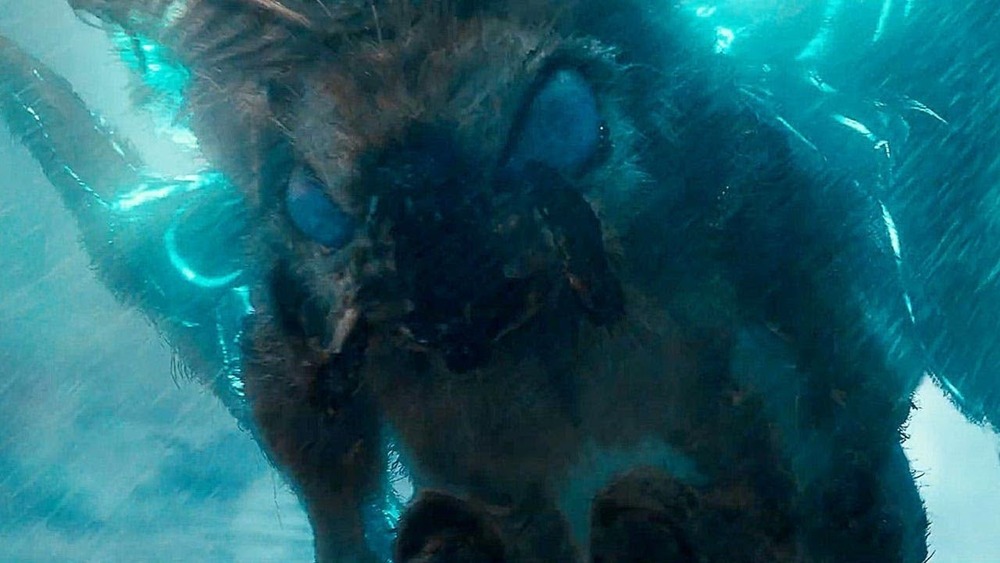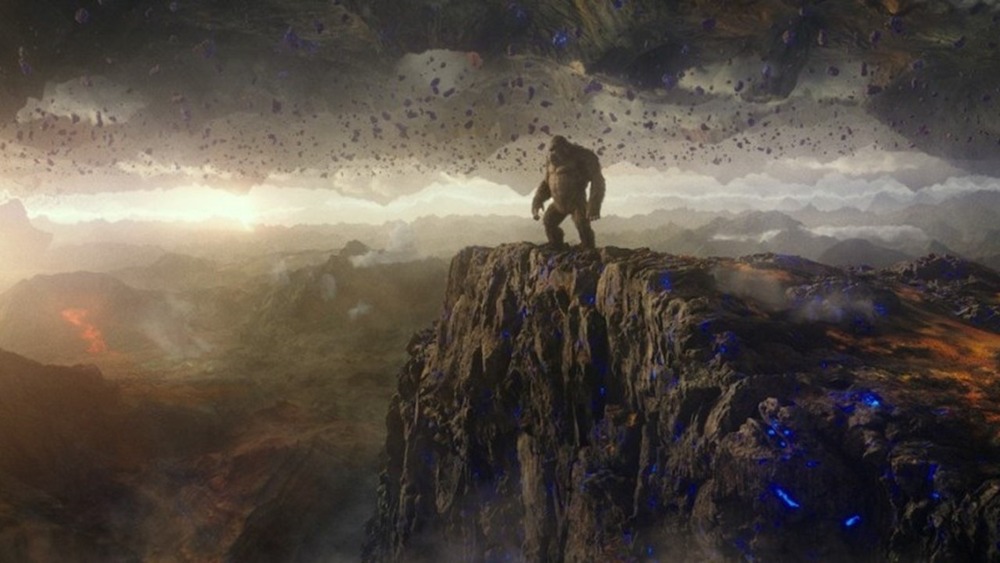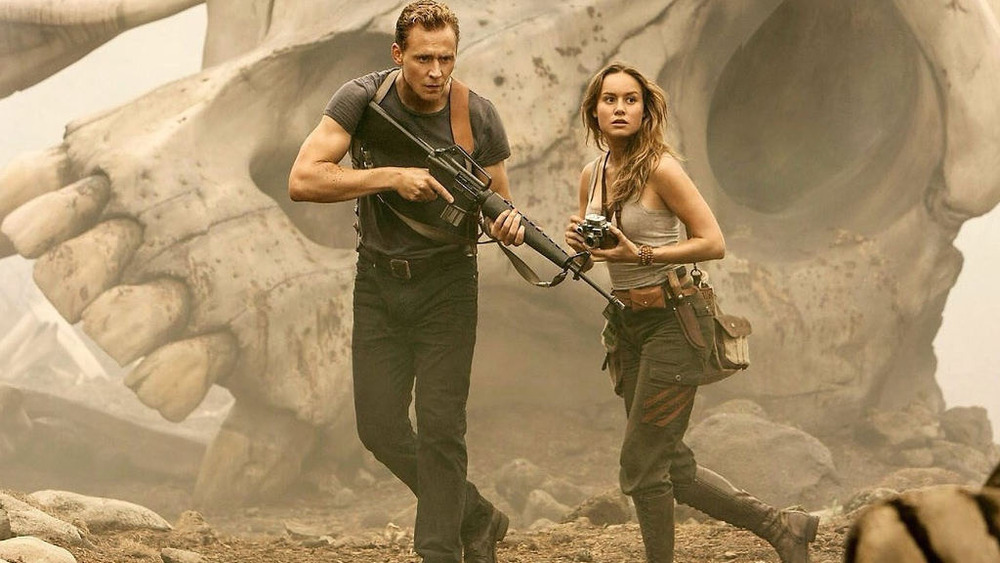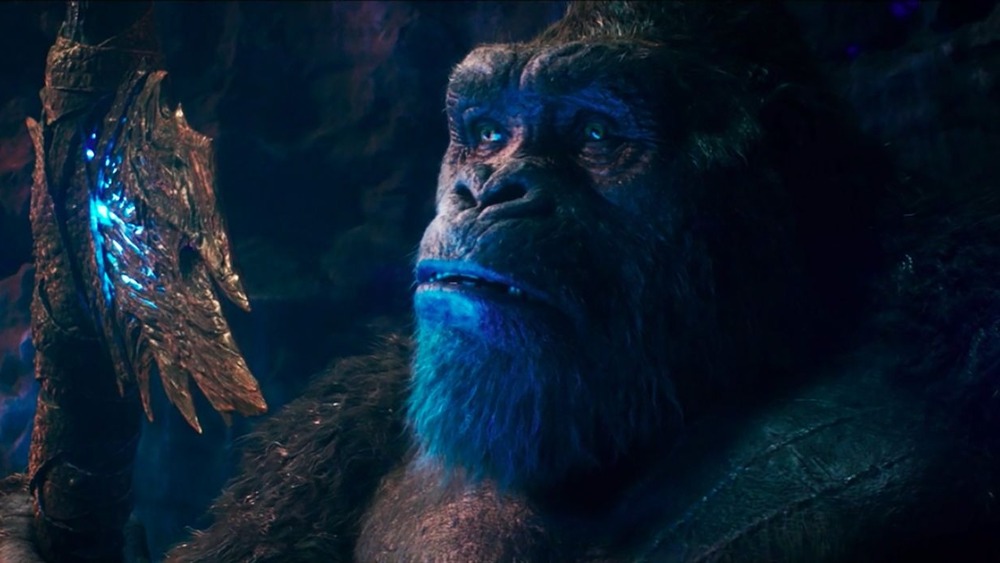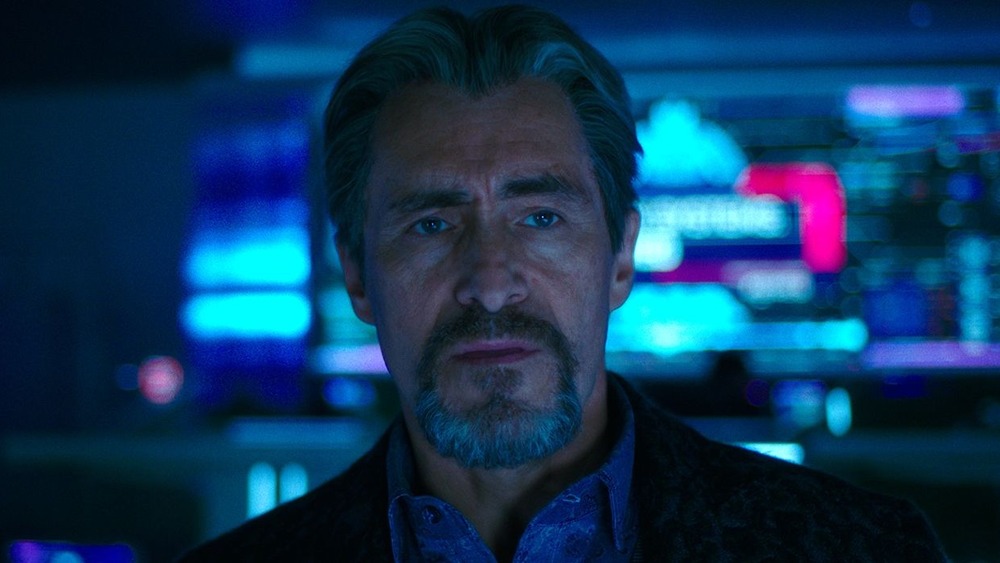Biggest Unanswered Questions In Godzilla Vs. Kong
It's all been leading up to this. In 2014, when Warner Bros. launched the MonsterVerse with its high-budget Godzilla reboot, we all knew it was building towards one thing: A big-screen match-up between King Kong and Godzilla, pitting cinema's two most famous giant monsters against each other for the first time in 59 years.
Now it's here, and on the monster-fighting front, Godzilla vs. Kong doesn't disappoint. However, as everyone other than Marvel knows, creating a shared cinematic universe is not easy. Ask the Dark Universe.
See, Godzilla vs. Kong isn't just a clash of two cultural titans. It's the culmination of everything that's come before in Warner Bros. MonsterVerse, tying together plot threads from Godzilla, Godzilla: King of the Monsters, Kong: Skull Island, and assorted tie-in comic books and novels.
Unfortunately, with all of the giant fisticuffs going on, Godzilla vs. Kong doesn't have a whole lot of time to swell on continuity. Plot threads from the previous movies get dropped or retconned, other huge twists aren't fully explained. Below are a few of the unanswered questions we have after watching Godzilla vs. Kong, although we can handle the question on everyone's mind: Does the Godzilla vs. Kong battle deliver? The answer: Oh, yes.
Where are the other Titans?
Godzilla: King of the Monsters concluded with a provocative image: all of Earth's Titans, bowing before Godzilla, officially crowning him monster royalty. The movie's end credit sequence pushed things even further. As Godzilla kept them all in line, the Titans became forces for good, creating new rainforests in desolate lands, healing decimated animal populations, even stopping the effects of global warming. Heck, their poop became useful — studies indicated it could be a very potent power source.
This sequence seems like it's setting the stage for Godzilla vs. Kong's big showdown, too. As news reports revealed, seismic disturbances on Skull Island attracted the Titans' attention, and the monsters began to flock to Kong's abode in the Pacific Ocean. But then, nothing. Not only did we never learn what happened when the Titans reached Skull Island, but aside from Godzilla, some Skullcrawlers, and a few Hollow Island residents, those characters are missing from Godzilla vs. Kong entirely.
A throwaway line explains that the Titans haven't been seen for three years, but that doesn't explain why they disappeared. Godzilla vs. Kong's opening credits, which are full of MonsterVerse lore, lists a number of Titans that have been defeated by Godzilla utilizing a graphic that (appropriately enough for this time of year) looks like a tournament bracket — but that doesn't mean they're dead.
We already know that Godzilla needs to keep the other Titans in line every now and then. Narratively, it's probably best that Godzilla vs. Kong focuses on the two biggest draws, but it's still odd that Rodan, Behemoth, Scylla, and the rest are completely missing during the kaiju grudge match of the century.
What happened to Alan Jonah and his Ghidorah head?
At the end of Godzilla: King of the Monsters, eco-terrorist Alan Jonah (played by Game of Thrones' Tywin Lannister himself, Charles Dance), was down but not out. Sure, his attempts to save the Earth by unleashing the Titans and causing an extinction-level event to wipe out all humans failed, but he seemed to have other tricks up his sleeve. As King of the Monsters' post-credits sequence revealed, Jonah bought one of Monster Zero's severed heads (specifically, the one that Godzilla tore off during the showdown at Isla de Mara, which regrew shortly afterwards). By all indications, he planned to use it for nefarious purposes.
What those purposes are remains to be seen. While Ghidorah's corpse is a key plot point in Godzilla vs. Kong, it's not clear if this is the same body part that Jonah secured in the previous movie. Even if it is, that raises more questions than answers. Mechagodzilla actually relies on two Monster Zero skeletons — one skull is used in the pilot's interface, while another is in the robotic kaiju itself — so even if this skull was originally Jonah's, Apex still had to find another one (a tricky task, given that Godzilla ate one head and vaporized the remaining two in King of the Monsters).
And, if that is the case, how did Apex get the skull from Jonah? If it's not, then where is Jonah and his rogue kaiju head? Either way, what was he originally planning? Hopefully, we'll get the answer in a further MonsterVerse sequel or multimedia tie-in.
How did Bernie's wife die?
Tragic pasts and dead families drive a lot of the action in Godzilla vs. Kong. Madison, played by Millie Bobby Brown, lost both her brother and her mother in Godzilla attacks. Alexander Skarsgård's Nathan Lind is haunted by the death of his brother, who perished trying to enter Hollow Earth. Little Jia's entire family — heck, her entire people — died when storms ravaged Skull Island, wiping out the Iwi. Even Kong himself is an orphan: Kong: Skull Island revealed that the Skullcrawlers killed his parents, which is one big reason why he relates so much to Jia.
Conspiracy theorist and undercover Apex employee Bernie Hayes (played by Bryan Tyree Henry of Atlanta) has some tragedy in his past, too. As he explains to Madison and her friend Josh, he wasn't always alone. At one point, he had a loving wife, who gave him — for some, unexplained reason — a flask of whiskey that he keeps in a gun holster.
When Josh needs to disrupt the satellite signal that gives Mechagodzilla its power, that flask comes in very useful, but without more information it feels a little bit like a deus ex machina. Not only do we never learn why Bernie's wife gave him such an odd gift, but we never know exactly what happened to her. Presumably, her death has something to do with Bernie's transformation from family man to conspiracy-loving nutcase, but in the absence of any real information, we'll just have to use our imaginations.
What caused the storm that killed the Iwi?
The Iwi, Skull Island's indigenous people, play a big role in Kong: Skull Island, the movie that introduced Kong to the MonsterVerse. The movie shows how the Iwi rescued and befriended Hank Marlow (an American WWII pilot who crashed on Skull Island in 1944), as well as the members of the Monarch expedition (who traveled to Skull Island in the '70s). They worshipped Kong like a god and relied on him to protect them from Skullcrawlers, the giant monsters that plague the island. The Iwi also appeared in the Kong: Skull Island comic book tie-in The Birth of Kong, which told the story of another expedition to Skull Island in the '90s.
Well, by the time that Godzilla vs. Kong rolls around, they're gone. As the movie explains, a storm ravaged Skull Island and wiped out all of the Iwi, save for a little girl named Jia (played by Kaylee Hottle). Unfortunately, that's all we get. They might as well have added a note saying the Iwi died on the way back to their home planet.
It's an explanation that's strikingly odd in its brevity. After all, storms have hit Skull Island plenty of times before. The entire island is perpetually surrounded by one, which is why it remained secluded for so long.
Given Godzilla vs. Kong's fascination with weird pseudo-science, there's clearly more going on here. Maybe the storm has something to do with the mysterious "seismic activity" and increasing geological instability on the island, hinted at in Godzilla: King of the Monsters' credit sequence. Maybe it's a side-effect of Hollow Earth, or the big increase in Titan activity. Maybe the storms created by Ghidorah in King of the Monsters did the job. We'll probably never know for sure, though, and that's a shame. The Iwi deserve better.
What happened to Hollow Earth's human population, and why aren't there any signs they existed?
Hollow Earth isn't just a home to giant monsters. Humans live there, too. At least, they did. In Godzilla: King of the Monsters, after Godzilla fell to the government's devastating Oxygen Destroyer (a throwback to the original 1954 Godzilla, in which the weapon is used to take out the titular kaiju), he retreated to an underwater cavern that seemed to be tied to Hollow Earth. When Monarch followed him, their scientists discovered an ancient underwater city devoted to the Titans, who were worshipped like gods.
However, while Godzilla vs. Kong gives us a much better look at Hollow Earth, we don't see any humans living down there. In fact, we don't see any signs that they ever existed at all. Clearly, someone lived down there at some point. That city didn't build itself, and someone had to carry the legend of the Titans to the surface, to immortalize their struggle in cave-paintings.
For now, though, the only hint we get as to where these ancient people went are rumors of a long-forgotten battle between men and monsters, first mentioned in King of the Monsters. Despite its focus on Hollow Earth, Godzilla v. Kong doesn't address the mystery whatsoever.
Is Mothra really dead?
Mothra met her tragic end in Godzilla: King of the Monsters, when King Ghidorah vaporized her with one of his gravity beams — or did it? While Mothra's ashes seemed to give Godzilla the power-up he needed to take Ghidorah down for good, the end credits hinted that she may not be gone for good: "Monarch finds massive egg: Could giant insect egg be a second Mothra...or something else?" a headline on the United World News website proclaimed.
According to the news story, the egg was discovered inside "Mothra's territory," and was taken to a Monarch research lab for further study. By the time that Godzilla vs. Kong rolls around, it hasn't been forgotten, either. One episode of Bernie's podcast, Titan Truth, carries the title "Mothra Pregnancy Theory," and has the following subhead: "So who's the baby daddy?"
These are all good questions, but Godzilla vs. Kong doesn't provide the answers. In the original Japanese Godzilla films, Mothra is a mystical being (Godzilla: King of the Monsters hints, but doesn't confirm, that she may be one in the MonsterVerse, too) who often goes through a cycle of death and rebirth. Similarly, King of the Monsters implied that there have been other Mothras before. While we did see Mothra hatch in that movie, she already appeared in carvings on the inside of the Temple of the Moth. If the MonsterVerse continues, Mothra's return seems almost inevitable — we just don't know how, quite yet.
How does the Hollow Earth power source work, exactly?
Apex Cybernetics doesn't send Kong, Nathan, Dr. Ilene Andrews, and Jia to Hollow Earth out of the goodness of its corporate heart. It wants something. Specifically, Apex CEO Walter Simmons, played by Demián Bichir, is after Hollow Earth's ultra-powerful energy source, which he hopes to use to make Mechagodzilla the ultimate anti-Titan weapon.
He succeeds, too. Once the Hollow Earth expedition identifies the energy source, Simmons' daughter Maya (Eliza Gonzalez) takes a sample, analyzes it, and sends her findings to dear old dad. She tries to escape through the new, Godzilla-made tunnel to the surface with the sample, too, but Kong's too quick for her. The giant ape grabs the HEAV that Maya is fleeing in and, with one flex of his hand, crushes it into bits.
It doesn't matter. Apex receives Maya's transmission and, within minutes, super-charges Mechagodzilla. But, hold on: That's not really how power typically works. Usually, you need an actual substance in-hand to extract energy, or to create a chemical reaction, or something. Power isn't really something that can be delivered via email.
It's possible that Apex was able to quickly replicate the Hollow Earth energy source using Maya's data and pump it into Mechagodzilla immediately, but the whole thing happens so fast that it's extremely unclear. Not that it really matters — we're here for the monster fights, not a sci-fi physics lesson — but it's still something that Godzilla vs. Kong leaves unexplained.
What happened to James Conrad and Mason Weaver?
As a sequel, Godzilla vs. Kong pulls double-duty. It's a follow-up to both Godzilla: King of the Monsters (itself a sequel to 2014's Godzilla) and Kong: Skull Island. A few King of the Monsters characters resurface in Godzilla vs. Kong — Millie Bobby Brown's Madison and her father, Kyle Chandler's Mark Russell were both introduced in that movie — and the film references a few more. Ren Serizawa, Apex's chief technical officer and Mechagodzilla's pilot, for example, is the son of Ken Watanabe's Ishiro Serizawa, who was introduced in Godzilla and heroically sacrificed himself to save Godzilla in the first sequel.
Unfortunately, Kong: Skull Island's main characters don't get the same treatment. While John C. Reilly's long-lost WWII vet Hank Marlow has likely passed on — by 2024, when Godzilla v. Kong takes place, he'd be about 100 years old — Tom Hiddleston's James Conrad would be in his late 80s, while war photographer Mason Weaver, played by Brie Larson, should only be in her 70s.
Conrad actually appeared briefly in the King of Monsters prequel comic Godzilla: Aftershock, which is set just a few months after the 2014 Godzilla movie, as an elder Monarch agent. Weaver, however, hasn't been seen since the end of Skull Island. Given that Godzilla vs. Kong is the first movie to continue Skull Island's storyline, you'd expect Kong's closest human allies to at least cameo, if they're still alive and kicking. Given that they did not, it's fair to assume the worst.
What went down between Kong and Godzilla's ancestors, and where did that axe come from?
Godzilla vs. Kong offers viewers a few reasons why the two monsters don't like each other. First, they're both alpha Titans, meaning the Earth quite literally isn't big enough for the both of them. Then there's the fact that Godzilla constantly endangers people Kong cares about. The biggest and most compelling explanation, however, is that there's bad blood between their two families. As documented in legends and ancient art, Godzilla and Kong's ancestors were the Hatfields and McCoys of monsters, spending generations caught up in a long and brutal war.
That sounds awesome, but Godzilla vs. Kong only offers hints as to how this conflict unfolded. A stray line of dialogue here, a mysterious cave drawing there. Finally, when Kong returns to his ancestral home in Hollow Earth, it seems like the movie is going to deliver the goods, but what we do get — that awesome Godzilla-spike axe — is just another tease.
It sure looks like the Kong family emerged triumphant in this epic struggle — after all, you don't sit on a throne unless you've earned the title of king — but there's a good chance we won't ever know exactly what happened. That's too bad. If watching one Kong fight one Godzilla was this good, what it would look like if entire armies went head to head? Now, that'd be a prequel.
What was Walter Simmons' dream?
For the most part, the human characters in Godzilla vs. Kong aren't nearly as interesting as the monsters, but as villain Walter Simmons, Demián Bichir does get one standout moment. Near the movie's climax, when Simmons has Maddie, Josh, and Bernie dead to rights, he launches into a good, old-fashioned supervillain monologue.
"This is how we, as a species, win," Simmons begins. "You see, 10 years ago, when Gojira was first revealed to the world, I had a dream. And in that dream, I saw one thing..."
He never gets to finish. Just then, as Ghidorah's consciousness takes control, Mechagodzilla turns towards the window overlooking the launch bay. "And that beautiful, amazing thing was..." Simmons continues, right before Mechagodzilla goes full Deep Blue Sea, rudely interrupting Simmons in the process.
"It's unfair," Bernie says in one of the film's funniest lines. "I really wanted to hear the rest of that speech."
You know what, Bernie? So did we. Bichir oozes slimy charisma, but Simmons' motivation in Godzilla vs. Kong feels just a wee bit undercooked. Knowing what motivated Simmons would've made him a lot more interesting, and it's too bad he didn't get another minute or so to fully explain what he had up his soon-to-be-devoured sleeve.
